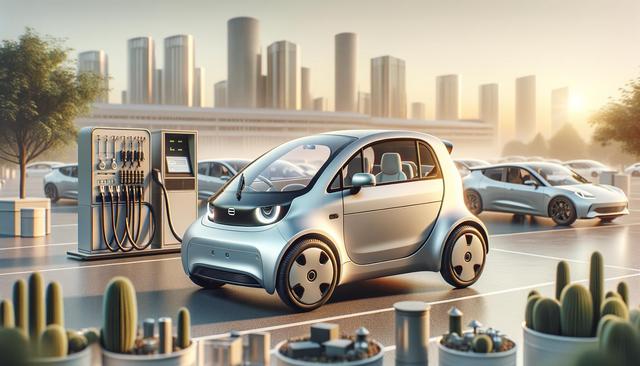Urbanization and the Shift in Transportation Needs
As cities continue to expand and become more congested, transportation habits are evolving. The rise of small electric cars is closely connected to the challenges and opportunities of urban living. With limited parking spaces, narrower roads, and increased environmental awareness, many city dwellers are opting for compact, eco-friendly vehicles. These cars are designed to be highly maneuverable and easy to park—qualities that are particularly valuable in densely populated areas.
In addition, small electric cars align well with the goals of modern city planning. Many urban centers are introducing stricter emissions regulations and restricting access for larger, more polluting vehicles. Compact electric cars often qualify for incentives such as reduced tolls, access to priority lanes, and tax benefits. These policy shifts make small electric cars not only a practical option but also an increasingly attractive one for urban residents.
Cost-Effective Commuting and Ownership
One of the key drivers behind the popularity of small electric cars is their affordability in the long run. While some electric models may have a higher upfront cost compared to traditional vehicles, the total cost of ownership is often lower. Electric cars typically have fewer moving parts, which means reduced maintenance and repair expenses. Additionally, charging an electric vehicle is generally cheaper than refueling with gasoline or diesel.
Other financial advantages include:
- Lower registration fees in some regions
- Government rebates or tax credits for electric vehicle purchases
- Exemption from congestion charges in certain cities
For urban commuters who travel moderate distances daily, small electric cars provide a budget-friendly solution. Many models are designed with efficient energy consumption in mind, allowing drivers to cover their daily routes without the need for frequent recharging.
Environmental Benefits and Sustainability
Growing concerns about climate change and air quality are prompting individuals and governments to seek sustainable alternatives to traditional transportation. Small electric cars produce zero tailpipe emissions, making them an environmentally responsible choice for urban travel. Their reduced carbon footprint contributes to cleaner air and a healthier living environment in cities.
In addition to reducing air pollution, these vehicles help minimize noise pollution due to their quiet electric motors. This is particularly beneficial in densely populated neighborhoods where the cumulative noise from traffic can be a serious concern. Furthermore, as the electricity grid becomes increasingly powered by renewable energy sources, the environmental advantages of electric vehicles will continue to grow.
Technology and User-Friendly Features
Modern small electric cars often come equipped with advanced technology that enhances the driving experience. From intuitive infotainment systems to smart navigation tools, these features cater to the needs of urban drivers. Many models also offer connectivity with smartphones and apps, making it easier to monitor battery levels, locate nearby charging stations, and plan efficient routes.
Key features commonly found in small electric cars include:
- Regenerative braking systems to extend battery life
- Compact designs for easier parking and navigation
- Customizable driving modes to optimize performance and energy use
- Advanced driver-assistance systems (ADAS) for safer urban travel
These user-friendly features not only improve convenience but also promote wider adoption among those who may be new to electric vehicles. The ease of use and practical benefits make small electric cars an accessible choice for a broad range of drivers.
Infrastructure and the Future of Urban Mobility
The growing support for electric vehicle infrastructure is another reason small electric cars are gaining momentum. Cities are rapidly expanding their networks of public charging stations, and many residential buildings are now being constructed with EV charging capabilities. This infrastructure development reduces range anxiety and supports the daily use of electric vehicles in urban settings.
Additionally, small electric cars are increasingly being integrated into shared mobility services, such as car-sharing and subscription-based driving platforms. These services allow multiple users to benefit from one vehicle, reducing the number of cars on the road and promoting more sustainable transportation systems. As urban populations grow, such models are expected to play a vital role in meeting mobility needs without overwhelming city infrastructure.
Looking ahead, advancements in battery technology and urban policy will continue to shape the future of small electric cars. As these vehicles become even more efficient, affordable, and accessible, their role in transforming urban mobility is likely to expand further.
Conclusion: A Smart Choice for City Living
Small electric cars represent a thoughtful response to the challenges of modern urban living. With their compact size, low environmental impact, cost efficiency, and user-focused features, they offer a practical and sustainable option for city dwellers. As urban infrastructure and public policies continue to evolve in support of electric mobility, these vehicles are well-positioned to become a cornerstone of transportation in the cities of tomorrow.




Leave a Reply